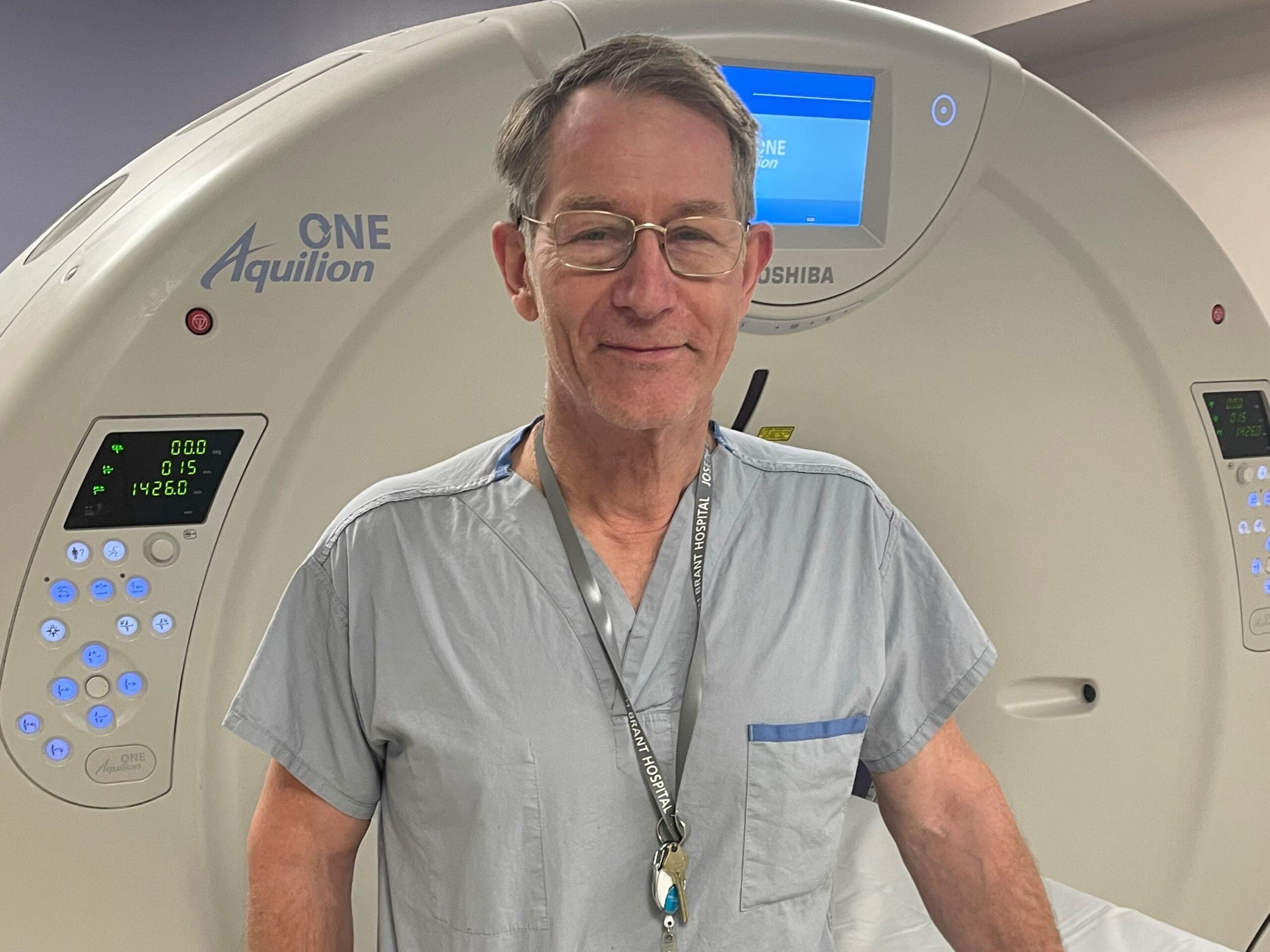Dr. Rawlinson recalls an example, where a woman came to the Emergency Department (ED) with severe abdominal pain. When her blood work came back normal, a CT scan was performed to determine the cause of the pain.
When one of Dr. Rawlinson’s colleagues reviewed the scan, the quality of the imaging was so detailed that they were able to identify a 4-centimetre section of her bowel where the X-ray dye was not showing up, meaning there was no blood supply.
“Our teams work very closely together, with the radiologist sharing his findings to the ED doctor. Urgent laparoscopic surgery was performed to restore the blood supply and save the bowel,” he said. “Without the CT Scan and the communication between the teams, the patient would have become very ill, very quickly.”
Every year, Joseph Brant Hospital conducts diagnostic imaging tests on almost 120,000 patients to diagnose illness – including kidney stones, cancerous tumours and diverticulitis – and develop treatment plans for patients.
“I am regularly reviewing the results of the diagnostic imaging tests performed at the hospital,” said Dr. Rawlinson. “I feel very privileged to play such an integral role in the care of our patients and am so grateful that our patients have access to state-of-the-art imaging technology that our patients need.”
